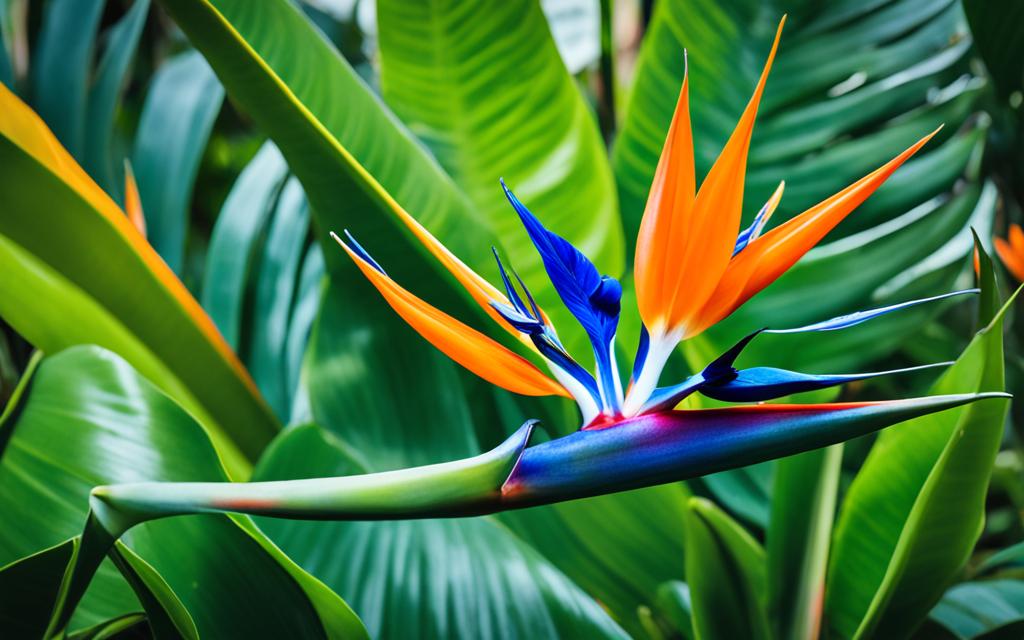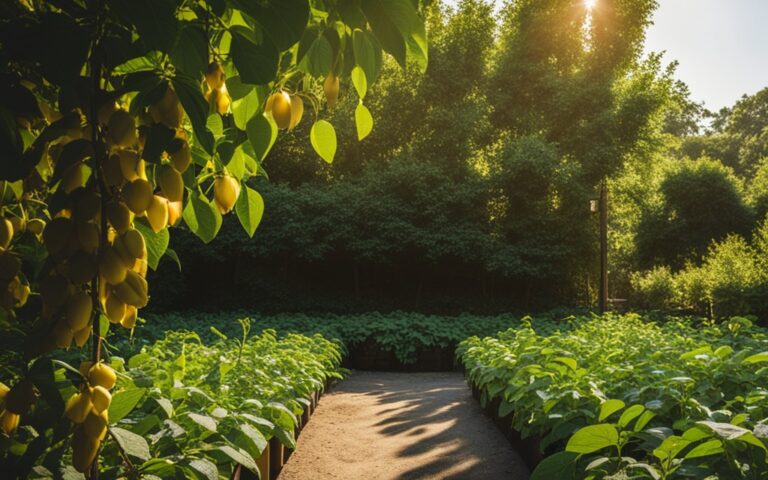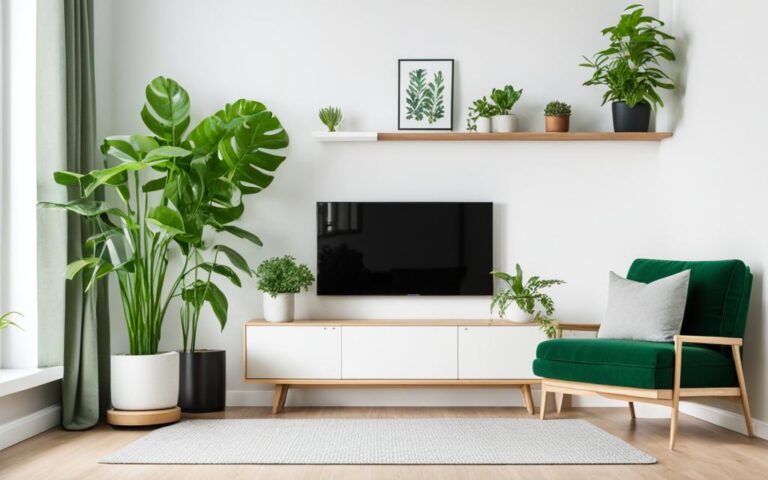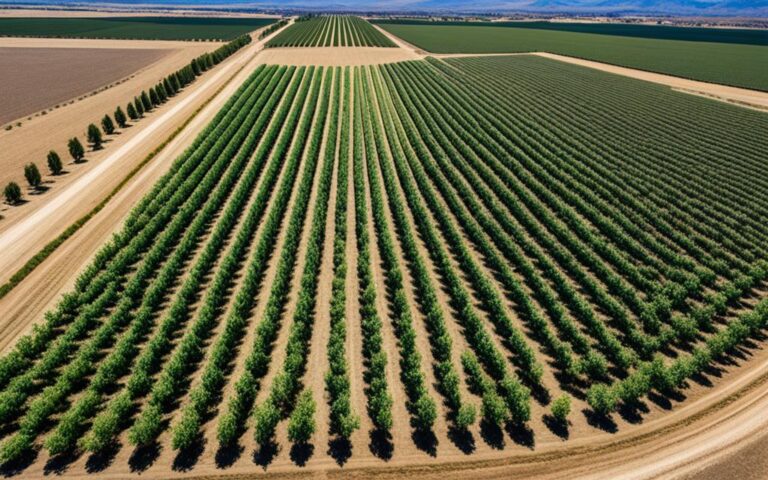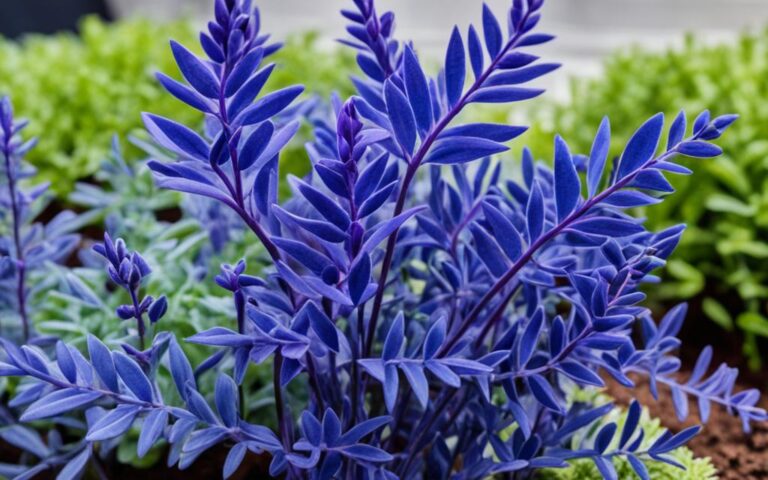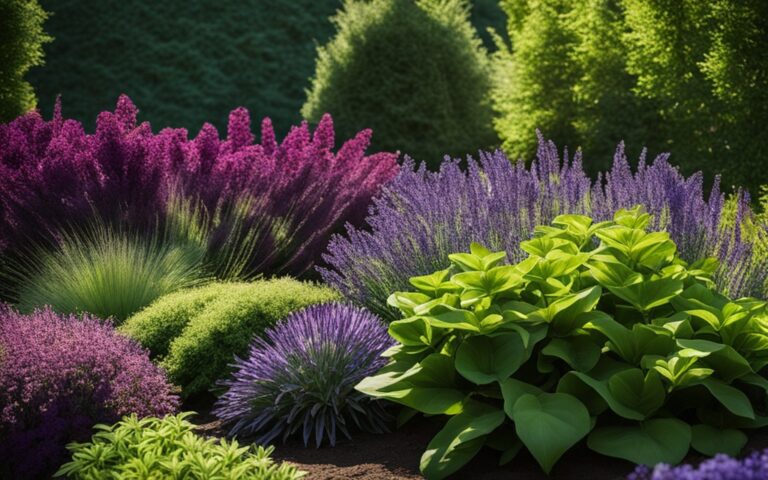Bird of Paradise Plant: Tropical Beauty for Your Home
Imagine having a plant that takes you to a tropical paradise from your home. The Bird of Paradise plant, also known as the Strelitzia Reginae, is a stunning addition to any indoor garden. It comes from South Africa and has flowers shaped like birds, bringing the tropics to your space.
The Bird of Paradise plant has shiny leaves and bright flowers. It can make your home look better and feel more relaxing. It’s great for anyone, whether you’re new to gardening or have been doing it for years. This plant is easy to care for, making it perfect for those with little time.
Key Takeaways
- The Bird of Paradise plant is native to South Africa and is known for its vibrant, bird-shaped flowers.
- It can be a low-maintenance, indoor plant that thrives in a variety of light conditions.
- The Bird of Paradise plant can bring a touch of the tropics to your home and improve indoor air quality.
- It is a versatile plant that can complement various décor styles, from modern to rustic.
- Proper care, including watering, fertilizing, and pruning, is crucial for the plant’s health and longevity.
The Exotic Beauty of the Bird of Paradise
Coming from South Africa’s lush lands, the Bird of Paradise, known as Strelitzia reginae, stands out with its exotic look. Its vibrant, bird-like flowers come in colors from deep orange to bright blue and purple. This plant truly catches the eye.
The Bird of Paradise’s flowers are hidden in special sheaths. Inside, you’ll find four to six flowers. Its long, elegant leaves can grow up to a foot and a half long and six inches wide. The plant gets four feet tall, with a three-foot bloom stalk and six to eight inch flowers.
It blooms from September to May, making it a symbol of freedom, beauty, and paradise. The Bird of Paradise is perfect for tropical gardens and indoor spaces. It turns any area into a beautiful oasis of exotic elegance.
“The Bird of Paradise is a true masterpiece of nature, a tropical gem that brings an unparalleled sense of exoticism and charm to any space it graces.”
Cultivation and Plant Care
The Bird of Paradise plant is a tropical delight that needs special care to thrive. It’s important to provide the right growing conditions, watering, and fertilization.
Ideal Growing Conditions
Bird of Paradise plants love a warm, humid place with temperatures between 18 and 24 degrees Celsius. They should be near a window or in a bright room, getting indirect sunlight all day. It’s also key to have good drainage, as these plants don’t like wet soil, which can cause root rot.
Watering and Fertilization
- Watering: Keep the soil a bit moist all year, but don’t overdo it. Water more in the warm months and less in the cold ones when the soil dries out faster.
- Fertilization: Use a liquid fertilizer made for tropical plants once a month in spring and summer. Cut back on fertilizing in winter.
With the right care, your Bird of Paradise plant will flourish and add a touch of the tropics to your home. Keep an eye out for pests or diseases and act fast to keep it looking lush and healthy.
“The Bird of Paradise plant is a true tropical treasure, requiring a delicate balance of care to achieve its full, vibrant potential.”
Bird of Paradise Plant: Bringing Color and Life to Your Home
The bird of paradise plant is a true masterpiece of nature. It has vibrant flowers and lush, green foliage. This plant can turn any space into a tropical oasis. Its unique, bird-shaped blooms come in shades of orange, red, and yellow.
This plant is easy to care for, making it perfect for anyone. It comes from South Africa and can thrive in many indoor settings. It needs moderate watering and some sunlight. This makes it great for those who want a touch of the tropics at home without the hard work.
The bird of paradise not only looks great but also helps keep your space healthy. Studies show that indoor plants like this one clean the air by removing toxins. These plants can also make you feel less stressed and happier.
Looking to add some color and life to your home? The bird of paradise plant is a great pick. It’s easy to care for and adds a special touch to any indoor oasis.
“The bird of paradise flower symbolizes freedom, nobility, opportunity, uniqueness, glamour, faithfulness, joy, and paradise.”
Health & Wellness Benefits
The Bird of Paradise plant brings tropical beauty indoors and has health benefits. It’s great at cleaning the air, removing bad stuff like formaldehyde, benzene, and carbon dioxide.
Studies show that indoor plants, like the Bird of Paradise, cut down on harmful air pollutants. This makes the air cleaner and safer, reducing the risk from toxic chemicals in household items.
Stress Reduction and Mental Well-being
The Bird of Paradise also helps with stress and mental health. Taking care of a plant connects us to nature, which can make us feel calm and happy.
- Being around indoor plants can lower blood pressure and improve sleep, boosting overall health.
- Adding the Bird of Paradise to your home can help reduce stress and anxiety, making you more productive and positive.
The Bird of Paradise is more than just a pretty plant. It brings health benefits and wellness advantages to your home, making it healthier and more relaxing.
“The Bird of Paradise plant is a true gem, not only for its exotic beauty but also for its remarkable ability to purify the air and promote a sense of well-being in our homes.”
Improving Indoor Air Quality
Indoor air quality is key to our health and wellness. Pollutants like formaldehyde, benzene, and trichloroethylene can harm us. But, the Bird of Paradise plant can help make the air cleaner.
This plant filters out harmful toxins in the air. It also takes in carbon dioxide and gives out oxygen. This means more fresh air in your space. Make sure to care for it by keeping it out of direct sunlight and watering it right to keep the air clean.
Think about allergies when placing your Bird of Paradise plant. With the right care, it can make your space look better and breathe easier. It’s a win-win for your health and your home.
| Plant | Air Purifying Ability | Care Requirements | Discount |
|---|---|---|---|
| Boston Fern | Handles light better than most ferns, mist weekly | Partial shade, indirect sunlight, water once per week | 35% off |
| English Ivy | Highly effective at removing VOCs | Avoid direct sunlight, can burn in southern exposure | 30% savings |
| Bird of Paradise | Filters common airborne toxins, absorbs CO2 | Partial shade, water weekly, maintain humidity | 40% discount |
| Money Tree | Easy-to-care-for, symbolizes prosperity | Indirect sunlight, water when soil is dry | 21% off |
| Tillandsia (Air Plants) | Thrive without soil, need water submersion bi-weekly | Indirect light, water every two weeks | 33% savings |
Adding air purifying plants to your space can make the air cleaner and healthier. With many plants to choose from and discounts, it’s easy to make your place a green, oxygen-filled haven.
The Versatility of the Bird of Paradise in Interior Decoration
The Bird of Paradise plant is a true showstopper, adding a tropical flair to any decor. It fits well with both modern and rustic styles. This plant brings elegance and sophistication to your space.
Its large, striking leaves look like the bird of paradise’s plumage. This plant can be a stunning centerpiece or focal point. It draws the eye and makes a big visual impact.
This plant thrives in various lighting conditions. It does well in sun-drenched corners or shaded areas. So, it’s a reliable choice for many interior settings.
| Decor Style | How the Bird of Paradise Complements |
|---|---|
| Modern | The clean lines and sophisticated look of the Bird of Paradise match modern decor well. |
| Tropical | The lush, vibrant foliage of the Bird of Paradise adds to the tropical feel, creating a serene oasis. |
| Rustic | The natural tones and textures of the Bird of Paradise blend well with rustic decor’s warm feel. |
Looking to make a statement or add tropical elegance to your space? The Bird of Paradise is a great choice. It can turn any room into a lush, refreshing oasis.
Bringing the Tropical Spirit into Your Home
If you want to add a bit of tropical paradise to your home, the Bird of Paradise plant is perfect. This exotic plant comes from South Africa and is known for its bright flowers and lush green leaves. It adds a sense of luxury and style to any room.
Putting the Bird of Paradise in ceramic or terra cotta pots is a great idea. These materials match the plant’s natural beauty, adding warmth and an earthy feel to your space. Hanging planters can also be used to make your space lively and dynamic, letting the plant’s beauty stand out.
To make your space even more tropical, try adding other tropical plants like bamboo palm or bromeliad. This mix creates a more exotic and immersive feel, taking you to a tropical island paradise.
The Bird of Paradise loves bright, indirect light, making it perfect for sunny rooms. It’s also easy to care for, needing water only every two weeks and avoiding too much water. This makes it a great choice for busy people.
Adding the Bird of Paradise to your home décor lets you enjoy tropical vibes all year. This versatile plant brings a fresh, natural feel to your spaces, making you want to relax and enjoy your own oasis.
“The Bird of Paradise plant is a symbol of paradise, a reminder of the beauty and wonder that can be found in nature.”
Whether you put it in the spotlight or use it as an accent, the Bird of Paradise adds tropical elegance and calm to your home. It takes you to a world of lush, vibrant landscapes.
Varieties and Species of Bird of Paradise Plants
The bird of paradise plant, known as Strelitzia, comes in many varieties and species. This makes it perfect for different spaces and tastes. The Giant Bird of Paradise (Strelitzia Nicolai) stands out with its tall size and unique leaves. These leaves can grow up to 30 feet high.
The Orange Flower Bird of Paradise (Strelitzia reginae) is another favorite. It’s smaller, reaching about 6 feet tall, and has bright orange and blue flowers. Other species include the Strelitzia caudata, White Bird of Paradise (Strelitzia alba), and the Strelitzia juncea, which looks like a rush.
| Variety | Height | Key Features |
|---|---|---|
| Strelitzia reginae | ~6 feet | Most widely grown Strelitzia species with iconic orange and blue flowers |
| Strelitzia nicolai | Up to 30 feet | Giant Bird of Paradise with massive, paddle-shaped leaves |
| Strelitzia alba | 20-30 feet | White Bird of Paradise with large, dramatic blooms |
| Strelitzia caudata | ~6.5 feet | Mountain Strelitzia, a rarely available species |
| Strelitzia juncea | ~6 feet | Rush-like appearance, also rarely available to home gardeners |
Strelitzia species and varieties offer many options for adding tropical beauty to your home. Whether you want a tall Giant Bird of Paradise or a smaller Orange Flower Bird of Paradise, there’s a perfect choice for you. Each one can enhance your space and match your style.
Light Requirements for Bird of Paradise Plants
The Bird of Paradise plant is known for its vibrant look. It needs specific light to do well at home. These plants, from southern Africa, love bright, indirect light. They can handle up to 6 hours of direct sunlight daily.
Place a Bird of Paradise near a south or west-facing window for the best light. This light setup is similar to its natural habitat. It gets plenty of sunlight but stays protected from harsh rays.
While these plants can take direct sunlight, too much can cause problems. Leaf scorch and discoloration might happen. To avoid this, adjust the plant’s spot or turn it regularly for even light.
If you don’t have a south or west window, don’t worry. Bird of Paradise plants can do well in any sunny spot with bright, indirect light. Just keep an eye on the plant and adjust as needed to keep it healthy.
| Light Requirement | Optimal Conditions | Potential Issues |
|---|---|---|
| Bright, indirect light | South or west-facing window | Leaf scorch, discoloration |
| Direct sunlight | Up to 6 hours per day | Leaf scorch, discoloration |
| Shaded areas | Not recommended | Leggy growth, lack of blooms |
Give your Bird of Paradise the right light, and it will flourish. It will add a touch of tropical beauty to your home.
Temperature and Humidity Needs
The bird of paradise plant needs a certain temperature and humidity to stay vibrant. Knowing the best conditions for this plant helps it thrive at home.
Optimal Temperature Range
The bird of paradise plant likes daytime temperatures between 65°F to 85°F (18°C to 30°C). At night, it should be cooler, around 50°F to 55°F (10°C to 13°C). Keep it away from cold drafts and freezing temperatures to protect its blooms and leaves.
Ideal Humidity Levels
- This plant does best in humidity of 60-70%. This moisture level keeps its leaves vibrant and supports growth, including its beautiful flowers.
- To keep the air moist, use a humidifier or put a tray of water near the plant. Misting the leaves also helps create a tropical feel.
- But, don’t overdo it with the humidity. Too much can cause problems like no new growth and wilted leaves.
| Metric | Ideal Range |
|---|---|
| Temperature | 65-85°F (18-30°C) during the day, 50-55°F (10-13°C) at night |
| Humidity | 60-70% |
Keeping the bird of paradise plant in these ideal conditions ensures it grows well and looks great at home.
Watering and Soil Requirements
Proper watering and well-draining soil are crucial for your bird of paradise plant. These tropical plants like consistent moisture but hate being too wet. Make sure the top 2-3 inches of soil dry out between waterings.
When watering, make sure to do it thoroughly. Ensure any excess water drains well. A well-drained potting mix helps prevent waterlogging, which can cause root rot. Signs of overwatering include yellowing, droopy, and splitting leaves. Browning leaf tips and edges with a yellow line mean you’re watering too often.
Wilted leaves might mean your plant has root rot. If you see this, change your watering habits. Let the soil dry out a bit between waterings. A mix of peat, perlite, or sand in your potting soil is ideal for bird of paradise plants. This soil type supports healthy roots and prevents waterlogging, helping your plant grow well.
| Watering Requirement | Soil Requirement |
|---|---|
| – Water thoroughly, allowing the soil to dry out slightly between waterings – Avoid overwatering to prevent issues like root rot |
– Use a well-draining potting mix with peat, perlite, or sand – Ensures proper aeration and prevents waterlogging |
Follow these tips for watering and soil to give your bird of paradise plant the best environment. This will help it thrive and look stunning in your home.
Fertilizing Your Bird of Paradise Plant
Feeding your bird of paradise plant the right nutrients is key for its growth and beautiful flowers. These plants love a mix of nitrogen, phosphorus, and potassium (N-P-K). A 1:1:1 water-soluble fertilizer is perfect for indoor plants.
Feed your plant every 6-8 weeks during spring and summer. This keeps it well-nourished. Cut back to every 3-4 weeks in fall and winter. This helps the plant save energy for the next growth.
Organic fertilizers are great for bird of paradise care. Compost, manure, or organic plant food feeds the soil slowly. This makes the plant’s leaves healthy and its flowers bright.
| Fertilizer Type | NPK Ratio | Feeding Schedule |
|---|---|---|
| Water-Soluble Balanced Fertilizer | 1:1:1 | Every 6-8 weeks during growing season, 3-4 weeks in winter |
| Organic Fertilizer | Varies | Every 3-4 months during growing season |
Give your bird of paradise plant the right nutrients for its health and beautiful flowers. This ensures it thrives and shows off its stunning blooms.
Pruning and Maintaining Your Plant
Keeping your Bird of Paradise plant healthy and looking good is key. Pruning is essential for its care. It helps shape the plant, encourages new growth, and stops diseases from spreading.
Techniques for Pruning and Keeping the Plant Healthy
Start by cutting off any damaged, yellow, or dead leaves at the base with clean, sharp shears. This makes your plant look fresh and helps it grow new, healthy leaves. Cut back any stems that are too long to keep the plant neat and prevent it from getting too crowded.
Also, cut off any flowers that are dying to make your plant bloom more often. Always clean your pruning tools with isopropyl alcohol between cuts to keep diseases away. Even though the Bird of Paradise plant doesn’t need much care, regular pruning keeps it looking great and helps it thrive indoors.
